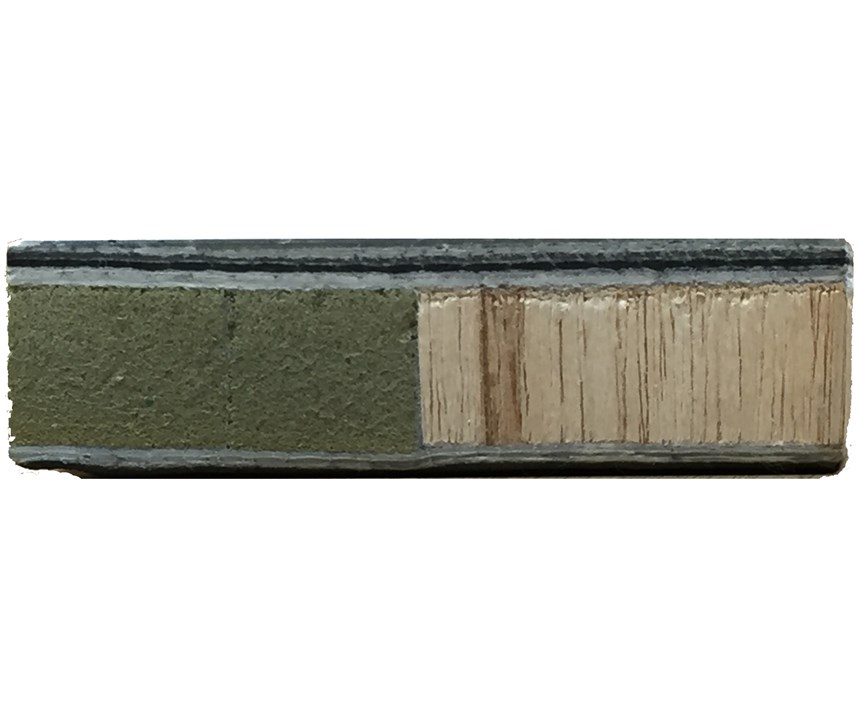Tecnofire adds fire resistance to transportation and infrastructure applications
Intumescent nonwoven veils improve the fire performance of composites in bridge, bus, building, marine and aircraft structures.
Tecnofire is a family of intumescent nonwoven veil products made by Technical Fibre Products (TFP, Burneside Mills, UK and Schenectady, NY, US). They have been used in a variety of applications, including fiberglass-reinforced plastic (FRP) wind fairings on the Whitestone Bridge in the Bronx, New York City (Fig. 3). Steel fairings that slice and deflect wind that buffets the bridge were replaced with FRP, cutting weight to reduce load on the bridge by 6,000 metric tonnes. Designed by Gurit US (Bristol, RI) and manufactured locally, the composite fairings covered 20,000 m2 of the bridge’s surface. “Each fairing was faced with Tecnofire to provide fire protection,” recalls Klopfer. “It was a drop-in solution. All they had to do before installation was paint the outside.”
Klopfer sees an uptick in architectural and construction applications, especially interior wall and panel designs where the materials must stop flame propagation to allow occupants time to exit. “Traditional materials have been entrenched for so many years,” he says, “but now there is a movement to reduce weight. There are advanced FR resins, including systems from Polynt and Ashland, but we see that designers want to use a combination of fire resistance strategies — for example, an FR resin with Technofire.” TFP has shown that with Tecnofire alone, lightweight composites can pass the common building fire standards per ASTM E119 and NFPA 285/286 tests. “We also ran the ASTM E84 test on Tecnofire and got zero flame spread with very little smoke. We can lower the heat release rate by up to 40% and increase the time to ignition by 40%.”
This kind of performance has also helped Tecnofire into several marine programs and airframes, the latter proving the material’s ability to withstand long-term exposure to aggressive fluids (e.g., jet fuel, hydraulic fluid, solvents). TFP has also adopted methodologies for smaller-scale, indicative testing in advance of full-scale tests in order to downselect composite designs better optimized to meet the fire resistance requirements of a final assembly.
Related Content
-
Cryo-compressed hydrogen, the best solution for storage and refueling stations?
Cryomotive’s CRYOGAS solution claims the highest storage density, lowest refueling cost and widest operating range without H2 losses while using one-fifth the carbon fiber required in compressed gas tanks.
-
Plant tour: Albany Engineered Composites, Rochester, N.H., U.S.
Efficient, high-quality, well-controlled composites manufacturing at volume is the mantra for this 3D weaving specialist.
-
Plant tour: Joby Aviation, Marina, Calif., U.S.
As the advanced air mobility market begins to take shape, market leader Joby Aviation works to industrialize composites manufacturing for its first-generation, composites-intensive, all-electric air taxi.














.jpg;maxWidth=300;quality=90)


